WhatsApp Marketing Strategies for D2C Brands: Unlock Growth with TheBotmode
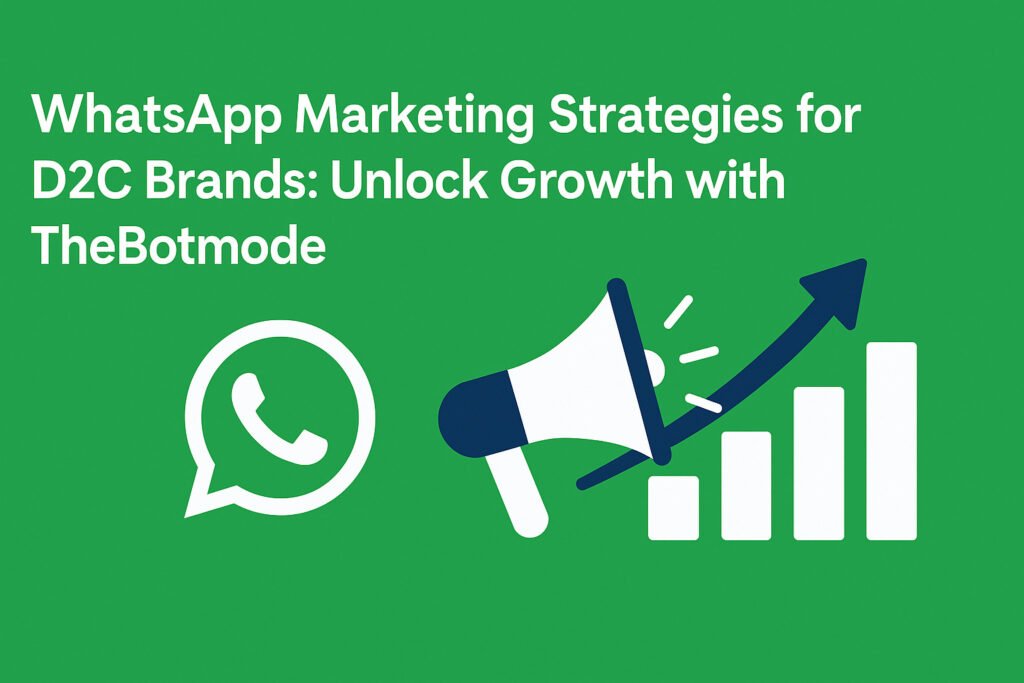
WhatsApp has evolved far beyond a simple messaging app. With over 2 billion users, it is now an essential tool for businesses to connect, engage, and convert customers. For D2C (Direct-to-Consumer) brands, WhatsApp Marketing is not just an option—it’s a powerful channel to drive meaningful customer relationships and increase sales. At TheBotmode, we specialize in helping businesses unlock the full potential of WhatsApp Marketing through innovative strategies designed to deliver real results. In this guide, you’ll discover powerful WhatsApp Marketing strategies to elevate your brand’s communication, drive customer engagement, and boost ROI. What is WhatsApp Marketing for D2C Brands? WhatsApp Marketing is a form of direct messaging that allows D2C brands to communicate with their customers via WhatsApp. It involves sending personalized promotional messages, updates, reminders, customer support, and even processing orders—all within a single app. Using features like the WhatsApp Business API, automated chatbots, and broadcast messaging, businesses can scale communication while maintaining a personal touch, which is crucial for D2C brands aiming for higher customer engagement. Why WhatsApp Marketing is Essential for D2C Brands Whether you’re a startup or an established enterprise, WhatsApp Marketing strategies can help you create authentic relationships with your customers, improve retention, and drive measurable results. Top WhatsApp Marketing Strategies That Actually Work for D2C Brands 1. Use WhatsApp Business API for Scalability For D2C brands looking to handle thousands of messages daily, the WhatsApp Business API is a game-changer. It enables automation, integrates seamlessly with your CRM, and supports chatbot functionality. At TheBotmode, we help you set up and manage the API effortlessly, ensuring that your brand can scale communication without losing its personal touch. 2. Set Up Automated WhatsApp Chatbots Don’t let your customers wait. AI-powered chatbots engage leads instantly, answer FAQs, and even guide users through the sales funnel 24/7. This strategy is crucial for lead nurturing and customer support, allowing D2C brands to keep customers engaged and satisfied. 3. Segment and Personalize Your Broadcast Lists Avoid sounding like spam by segmenting your audience based on behavior, location, or purchase history. Personalized broadcast messages see higher engagement and conversions. Tailor your message for each segment, ensuring your communication feels relevant and timely. 4. Leverage Interactive Buttons & Quick Replies Make your messages more actionable by adding clickable buttons, product catalogs, and quick replies. These interactive features not only improve the user experience but also boost CTR (Click-Through Rates), encouraging customers to take action immediately. 5. Integrate WhatsApp With Your Website & Ads Add Click-to-WhatsApp buttons on your website or run Facebook/Instagram ads that open directly in WhatsApp. This seamless transition helps improve conversions and simplifies lead capture, making it easier for customers to reach out and inquire about products or services. How TheBotmode Helps with WhatsApp Marketing At TheBotmode, we provide end-to-end WhatsApp Marketing services tailored to your business goals. Whether it’s chatbot setup, campaign management, API integration, or analytics, we’ve got you covered. Our platform is user-friendly, scalable, and backed by a team of marketing professionals who live and breathe WhatsApp Marketing strategies. We work with you to implement effective strategies, track performance, and continuously optimize your campaigns for better results. FAQs Q1. Is WhatsApp Marketing Legal? Yes, WhatsApp Marketing is legal as long as you obtain user consent before messaging and follow WhatsApp’s commerce policy. It’s important to comply with WhatsApp’s guidelines to avoid account suspension. Q2. Can Small D2C Businesses Use WhatsApp Marketing? Absolutely! Small D2C businesses can use the WhatsApp Business App or API to easily reach their audience and enhance customer communication. Q3. What Types of Messages Can I Send via WhatsApp Marketing? You can send a variety of messages, including order updates, promotions, product catalogs, reminders, surveys, and customer service messages. The key is to keep the content personalized and relevant to the recipient. Q4. How is TheBotmode Different from Other WhatsApp Marketing Platforms? TheBotmode stands out with its user-friendly dashboard, powerful automation tools, and expert support. We provide a no-code platform that allows business owners and marketers to manage campaigns without a technical background. Q5. Do I Need a Developer to Use TheBotmode? Not at all! Our platform is designed to be no-code, making it accessible to marketers and business owners without the need for technical expertise. Our team is also available to offer support whenever needed. Conclusion: Start Your WhatsApp Marketing Journey Today WhatsApp Marketing offers a huge opportunity for D2C brands to enhance engagement, streamline customer service, and boost conversions. With TheBotmode by your side, you can easily implement these powerful strategies, scale your communication, and achieve your marketing goals. Ready to unlock the power of WhatsApp Marketing? Start growing your business today with TheBotmode!
Win-Back Campaigns on WhatsApp: Re-engage Inactive Customers
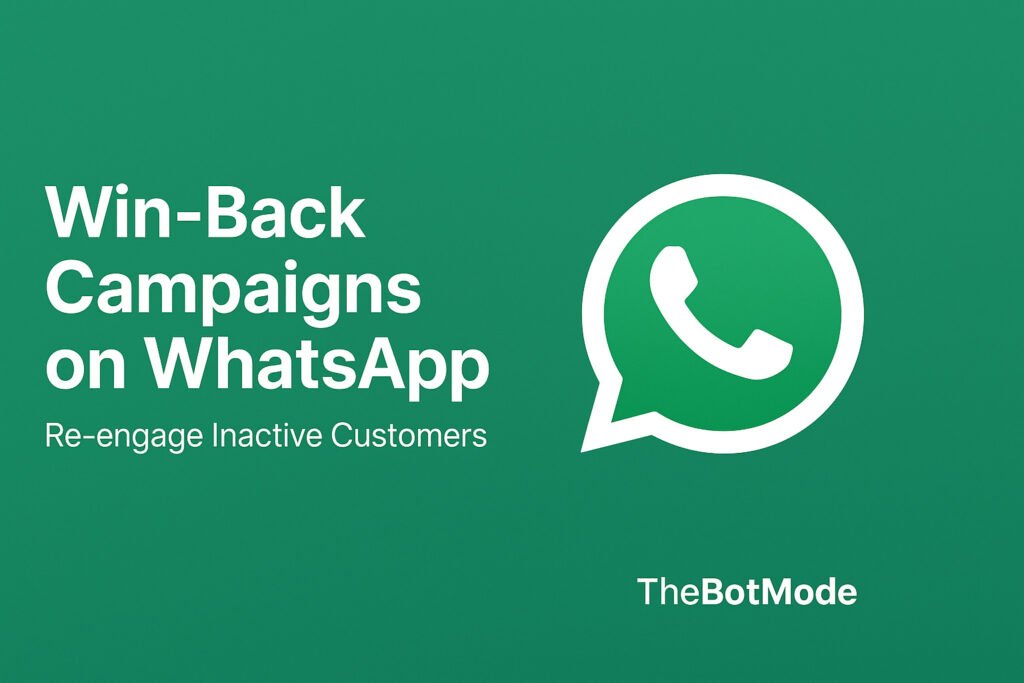
Introduction: D2C brands face a recurring challenge—customers who disengage after making a purchase. Whether it’s a one-time buyer or a once-loyal customer who has gone silent, winning them back can significantly boost retention and lifetime value. With an average open rate of 98%, WhatsApp provides a direct and highly effective channel to reconnect with inactive users. In this guide, TheBotMode breaks down how D2C businesses can create automated win-back campaigns on WhatsApp to drive repeat purchases and customer engagement. What Is a Win-Back Campaign on WhatsApp? A WhatsApp win-back campaign is a targeted message or automated workflow aimed at reactivating customers who haven’t made a purchase or interacted with your brand within a specific period—typically 30, 60, or 90 days. Using the WhatsApp Business API, these messages can be personalized with customer data and sent at optimal times, often with offers or product recommendations to entice the user to return. Top Benefits of WhatsApp Win-Back Campaigns for D2C Brands 1. Lower Customer Acquisition Costs Reactivating existing customers is significantly more cost-effective than acquiring new ones. 2. Boost in Repeat Purchases Timely nudges can rekindle interest and drive spontaneous purchases. 3. Higher Engagement Rates WhatsApp messages often outperform email in open and click-through rates. 4. Personalized Communication Messages can be tailored with customer names, order history, and curated product recommendations. How to Segment Inactive Customers for WhatsApp Win-Back Effective segmentation is key. Use your CRM or eCommerce platform to identify: This ensures your message remains relevant and personalized. Best Practices for Running Win-Back Campaigns on WhatsApp 1. Time It Strategically Start with a 30-day inactivity trigger, and scale up to 60 or 90 days. Increase the incentive based on the time gap. 2. Use Natural, Human Copy Avoid robotic or salesy language. Use friendly openers like: 3. Provide a Clear Incentive Discounts, free shipping, loyalty points, or early access to new drops can work well. 4. Enhance with Media and Buttons Include product images, catalogs, or quick-reply buttons to make the message more interactive. 5. Track Conversions and Refine Use UTM parameters and attribution tools to measure performance. Optimize based on data. Example Win-Back Message Templates Message 1: Comeback Discount Hi [Name], we noticed you haven’t stopped by in a while. Here’s 10% off your next order. Use code COMEBACK10 at checkout. Tap below to explore our latest collection. Message 2: Product Recommendation Based on your last order, we think you’ll love these new arrivals. Have a look—we’d be happy to assist if you need help choosing. Message 3: Feedback and Reconnect How was your last order, [Name]? We’d love your feedback. By the way, some exciting new launches are waiting for you. Automating Win-Back Campaigns with TheBotMode TheBotMode enables D2C brands to fully automate their win-back workflows on WhatsApp. Features include: Conclusion: Re-engaging dormant customers doesn’t require massive budgets—just the right timing, message, and channel. WhatsApp offers a powerful medium to run impactful win-back campaigns. With TheBotMode, D2C brands can automate these journeys, personalize communication, and ultimately improve customer lifetime value. FAQs: Q1. How often should I run win-back campaigns on WhatsApp? You can set up flows for 30, 60, or 90 days of inactivity. The frequency depends on your sales cycle and customer behavior. Q2. Can I personalize WhatsApp win-back messages? Absolutely. You can include names, order history, product preferences, and more using WhatsApp Business API. Q3. Is WhatsApp win-back more effective than email? Yes, especially for D2C brands. WhatsApp often achieves higher open rates and faster responses than traditional email marketing. Q4. What if users don’t respond to the first message? Set up automated follow-up reminders with alternative offers or messaging angles to re-engage them gradually.
Festival Marketing on WhatsApp: Campaign Ideas That Work
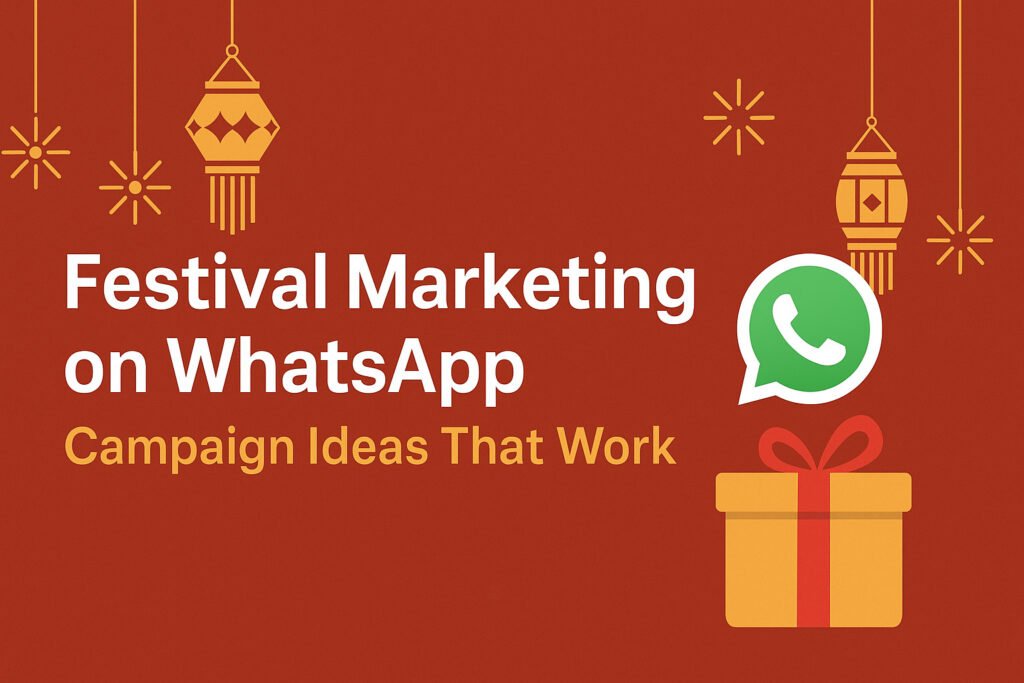
Introduction: In India, festivals are far more than cultural events—they’re peak sales opportunities. From Diwali and Holi to Eid, Christmas, and Raksha Bandhan, consumers are primed to shop. For D2C brands, leveraging WhatsApp for festival marketing can significantly boost engagement, sales, and customer loyalty. Using TheBotMode’s WhatsApp automation tools enables timely, personalized campaigns delivered straight into customers’ inboxes—minimizing reliance on emails or ads. Top Festival Campaign Ideas That Deliver Results 1. Exclusive Festival Offers via WhatsApp Broadcast Send time-sensitive promotional messages to your WhatsApp subscriber list—segment audiences and personalize by name, location, or past purchases. Example: “Hi Riya, celebrate Diwali with 20% off on your favourite kurtis. Offer valid till midnight!” Why it works: High open rates + urgency = instant action. 2. Spin the Wheel Campaigns for Festival Discounts Create interactive gamified campaigns on WhatsApp where users spin to win festival-themed deals like free shipping, limited discounts, or freebies. Best for: Diwali, Navratri, Christmas and festive markets. Advantages with TheBotMode: Run spin-to-win campaigns directly on WhatsApp—no app downloads required. 3. WhatsApp Catalog Promotions with Festive Themes Showcase curated festive collections (e.g. “Diwali Gifting Ideas”, “Eid Special Offers”) in WhatsApp product catalogs, styled with festive banners or limited-time labels like “Only 2 left!” Pro Tip: Use high-quality visuals to guide users and boost urgency. 4. Automated Reminder Campaigns Set up flows to remind customers about cart abandonment or deal expirations. Example Automation Flow: 5. Personalized Gifting Recommendations via WhatsApp Use TheBotMode’s AI logic to suggest tailored gift ideas during festivals like Raksha Bandhan, Valentine’s Day, and Christmas. Personalization drives engagement and purchase intent. 6. Festival Loyalty Campaigns with Rewards Encourage repeat purchases with special loyalty offers.Example: “Buy during Navratri and get double loyalty points!”Send point updates, coupon codes, and personalized rewards directly via WhatsApp. How TheBotMode Helps Automate Your Festival Campaigns Best Timing to Launch Festival Campaigns Festival Ideal Campaign Start Key Focus Diwali 2 weeks in advance Gift combos, flash sales Holi 1 week before Color collections, skincare essentials Raksha Bandhan 10 days beforehand Gift boxes, sibling discounts Eid 7–10 days before Fashion, home decor, accessories Christmas / New Year 2 weeks in advance Combo bundles, new arrivals Conclusion: Festival marketing via WhatsApp isn’t just optional—it’s a competitive advantage. With powerful engagement tools, immediate delivery, and automated flows, WhatsApp enables D2C brands to connect during key buying moments. TheBotMode simplifies launch, automation, and scaling of festival campaigns—no coding required. Ready to launch your next festival campaign on WhatsApp?Visit TheBotMode.com and explore our pre‑built festive flows to get started.
Boost First‑Time Orders with Spin the Wheel Coupons on WhatsApp
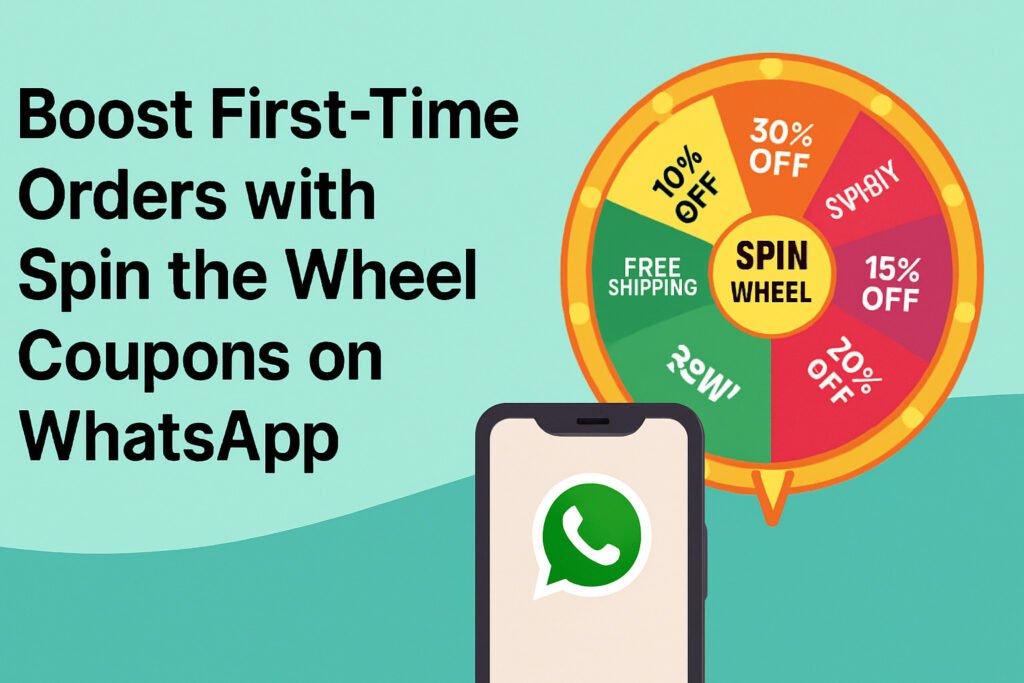
Introduction: Why First‑Time Orders Matter for D2C Brands For direct‑to‑consumer (D2C) businesses, converting new visitors into first‑time customers is often the most challenging and expensive phase of the funnel. Standard discount pop‑ups and static offers are frequently ignored. Enter Spin the Wheel gamification on WhatsApp—an interactive, engaging, and high‑conversion strategy that stands out. What Is Spin the Wheel for WhatsApp? Spin the Wheel is an interactive lead‑capture mechanism where users spin a virtual wheel to win a discount or reward. When integrated with WhatsApp automation through TheBotMode, this becomes a powerful system to convert first‑time visitors into buyers. Embed the widget on your website and deliver the winning coupon instantly via WhatsApp, creating a frictionless experience that builds trust and sparks action. Why Use Spin the Wheel Coupons on WhatsApp? 1. Higher Engagement Rates Gamified offers attract far more attention than static banners—users enjoy the interactive nature of spinning a wheel more than a standard discount notification. 2. Immediate Lead Capture To spin the wheel, visitors must submit their phone number. This enables you to grow a qualified, opted‑in list instantly and organically via WhatsApp. 3. Fast and Direct Coupon Delivery WhatsApp automation ensures personalized coupon codes land immediately in the user’s inbox—enhancing open rates and driving swift action. 4. Real‑Time FOMO Rewards Limited‑time coupons (e.g. valid for just 15–30 minutes) trigger urgency and prompt customers to act fast before the opportunity passes. How to Set Up Spin the Wheel Coupons with WhatsApp Step 1: Create Your Spin the Wheel Widget Use TheBotMode’s gamification plugin or a compatible third‑party widget. Configure the wheel with 3–5 reward tiers (e.g. 10%, 15%, 20% off or free shipping). Step 2: Connect It to WhatsApp Automation Integrate the widget using TheBotMode’s WhatsApp API. Once users enter their phone numbers and spin, the system triggers automated coupon delivery instantly. Step 3: Design Your WhatsApp Message Flow Structure your messaging effectively: Step 4: Follow Up with Reminder Flows If a coupon isn’t redeemed within hours or by the next day, automatically send reminder messages—perhaps with a “last chance” bonus to capture conversions. Best Practices for Spin the Wheel Campaigns Real Results: A D2C Skincare Brand Case Study A skincare brand implemented TheBotMode’s Spin the Wheel widget on their homepage, offering 10–30% off coupons via WhatsApp: This gamified approach transformed passive browsers into engaged buyers—delivering measurable uplift in acquisition and conversion. Conclusion: Make First‑Time Purchases Engaging and Seamless By combining Spin the Wheel gamification with WhatsApp automation, D2C brands can create engaging, seamless funnels that drive first‑time purchases. With TheBotMode, you can easily build, automate, and measure these campaigns—boosting conversions and growing your WhatsApp marketing list with qualified leads.
WhatsApp for D2C
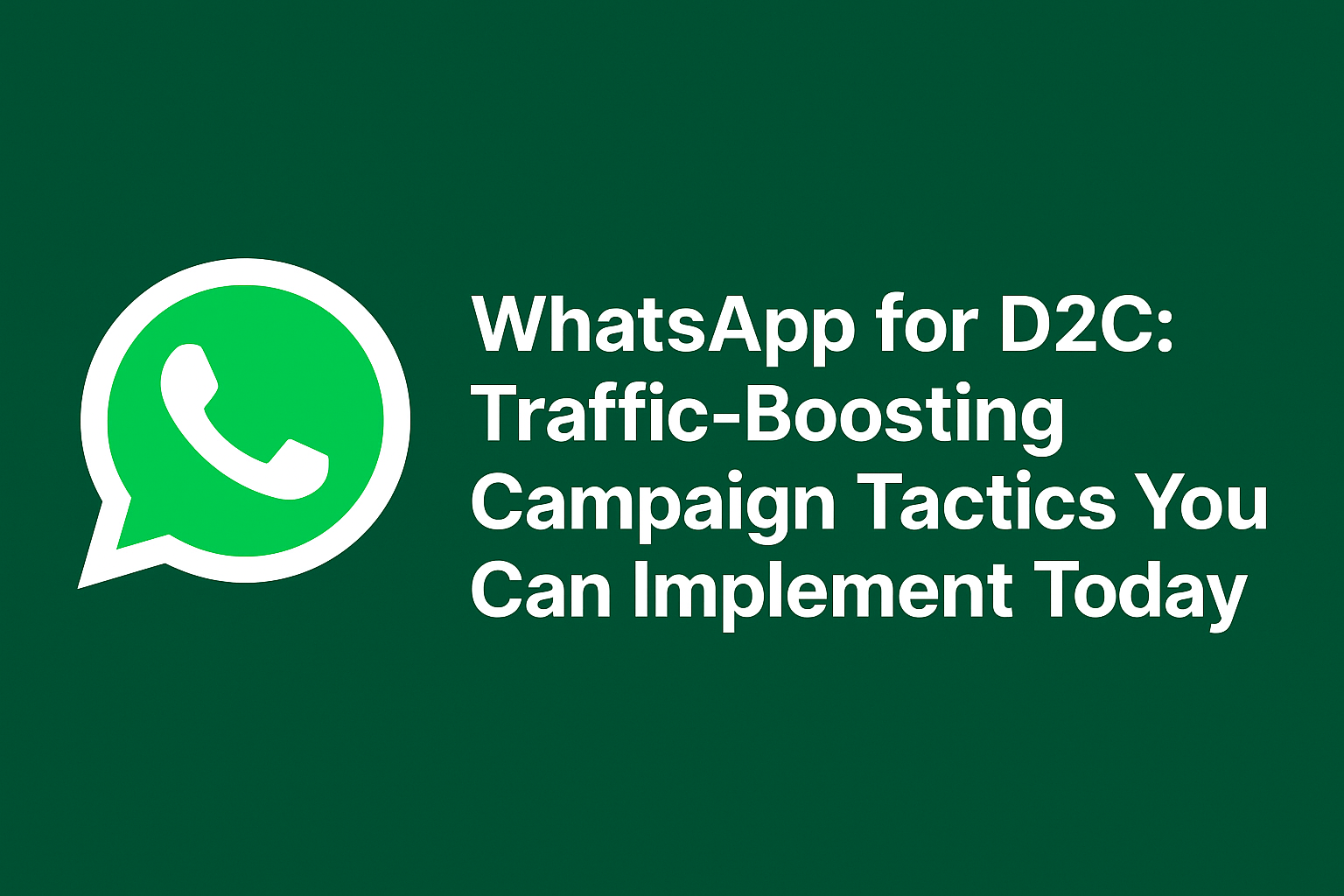
WhatsApp for D2C: Traffic‑Boosting Campaign Tactics You Can Implement Today Introduction In 2025, WhatsApp has become a conversion engine for D2C brands—powered by up to 98% open rates and 45–60% click-through rates, far outperforming email and SMS.This blog unpacks proven campaign tactics—focused on opt‑in, segmentation, automation, rich media, ads, payments, and analytics—that D2C brands can launch today to boost web traffic and sales. 1. Opt‑In Strategy: Foundation of Trust & Compliance WhatsApp mandates explicit opt‐in consent for marketing messages. Brands must collect and store consent via checkout flows, website pop‑ups, social channels, QR codes, and packaging inserts. This ensures compliance and higher engagement.Tips: 2. Segmentation & Personalization to Drive Engagement Segment contacts by behavior, purchase history, and demographics—including dynamic fields like names or previous purchases—to create messages that feel deeply personal. Personalization boosts engagement: nearly 72% of consumers engage more with personalized marketing messages.Strategic segmentation elevates both open and reply rates, driving more traffic and conversions. 3. Automation & Drip Campaigns for Scale Automate touchpoints with chatbots and workflow engines for: These interventions lower friction and replace manual outreach with scalable, personalized flows—with human-handover options for complex cases. 4. Rich Media & Conversational Campaign Content WhatsApp supports clickable buttons, product catalogs, PDFs, images and quick-reply options—all ideal for driving click-throughs to your site.Use broadcasts creatively: immersive storytelling, behind-the-scenes peeks, flash offers, or polls/quizzes to encourage replies and website visits. 5. Click‑to‑WhatsApp Ads & Conversational Lead Gen Run Click‑to‑WhatsApp ads on Facebook, Instagram, or your website to initiate conversations seamlessly. Prospects land directly in chat—now you can capture their name, phone number, and guide them to your site or product pages via interactive flows. 6. Payments & In‑Chat Checkout Enable in‑chat payments using UPI, Razorpay, WhatsApp Pay (especially effective in India), or payment links. This removes checkout friction and boosts conversions by keeping users inside WhatsApp rather than redirecting them. 7. Timing, Analytics & Continuous Optimization Send messages during peak engagement windows, not off-hours. Track metrics like delivery rate, open rate, CTR, reply rate, opt‑out rate, and conversions from WhatsApp chats to your site.Use A/B testing for timing, segmentation, CTA formats, and message content to optimize continuously. 8. Avoid Common WhatsApp Marketing Pitfalls Don’t broadcast unsolicited messages or reuse stale content. Avoid disreputable tools. Stick with providers using the official WhatsApp Business API to ensure deliverability, compliance, and analytics capability.Treat WhatsApp as a two-way channel, not a one-off broadcast list. 9. Real‑World D2C Examples That Drive Growth Conclusion WhatsApp isn’t just a support channel—it’s a full-funnel traffic and conversion powerhouse. By implementing compliant opt‑in, segmentation, smart automation, rich media campaigns, conversational ads, and integrated payments—and optimizing through analytics—you can drive significant website traffic and bottom-line growth now. Ready to launch? Let TheBotMode support your next WhatsApp campaign with tools, templates, and a conversion-focused strategy. FAQs Q: What makes WhatsApp marketing effective for D2C brands? WhatsApp delivers 98% open rates and 45–60% click-throughs, with 66% of users making a purchase after chatting with a brand—offering unmatched engagement compared to email or SMS. Q: How do I comply with opt‑in rules? Collect explicit consent during checkout or via pop‑ups/QR codes, inform customers what they’re subscribing to, enable easy opt‑out, and keep records to ensure compliance. Q: Which WhatsApp campaigns convert best? Campaigns with automation for cart recovery, welcome flows, query replies, and personalized promotions tend to outperform. Using rich media + CTA buttons further drives traffic. Q: How can I measure traffic from WhatsApp campaigns? Use platforms with built-in analytics to track delivery, CTR, opt-out, and conversions tied to chat links or promo codes. A/B test subject lines, timing, and segment variants. Q: Which tools support WhatsApp marketing for D2C brands? Choose providers that support the WhatsApp Business API, offer analytics, automation workflows, payment links, and template message support—ensuring compliance and scale.
WhatsApp Blue Tick Benefits
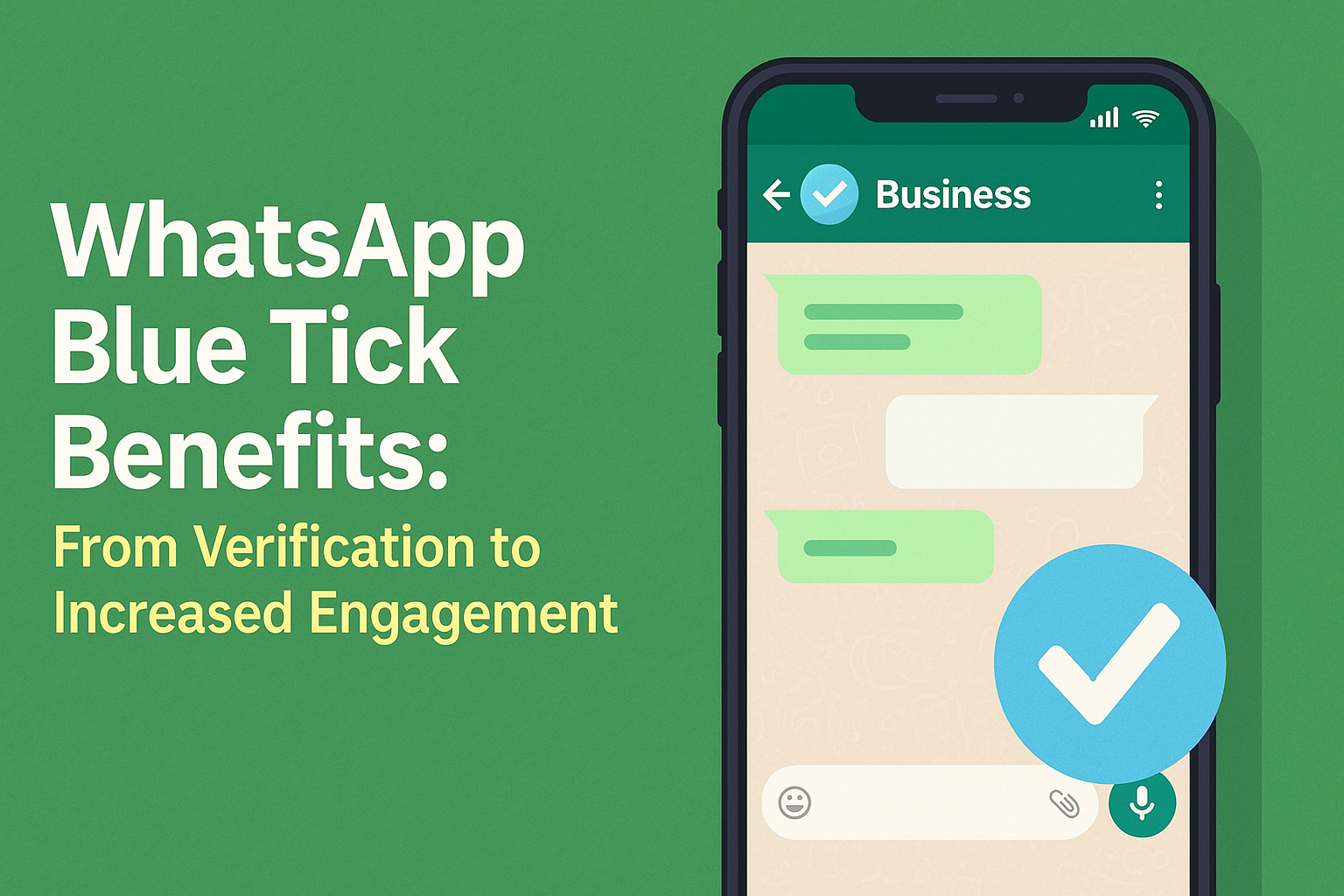
WhatsApp Blue Tick Benefits: From Verification to Increased Engagement Introduction For D2C brands, building trust and fostering engagement are daily challenges. That’s where the WhatsApp Blue Tick comes in. A verified business account not only signals authenticity but also unlocks powerful features designed to boost open rates, streamline customer support, and ultimately drive sales. In this blog, we’ll explore exactly what the Blue Tick is, why it matters, and how you can apply for one right here on TheBotMode. Understanding the WhatsApp Verified Business Account What Is the Blue Tick vs. Green Tick? Eligibility Criteria Top Benefits of the WhatsApp Blue Tick for D2C Brands 1. Building Customer Trust and Credibility 2. Enhanced Brand Visibility and Recognition 3. Improved Customer Engagement 4. Streamlined Communication and Support Step-by-Step Application Process Prerequisites Application Steps Case Study: D2C Brand Success on TheBotMode Brand: GlowHive Skincare Maximizing Your Blue Tick Account Crafting Welcome Messages Leveraging Broadcast Lists Tracking Performance with Analytics Ready to Get Your Blue Tick? Give your D2C brand the credibility edge it deserves. Apply for a blue tick. Conclusion A WhatsApp Blue Tick is more than just a badge—it’s a trust accelerator, engagement booster, and brand differentiator all rolled into one. By following the steps above and leveraging advanced features like quick replies and bots, D2C brands can transform customer interactions into meaningful relationships that drive repeat business. Frequently Asked Questions What’s the difference between the Blue Tick and Green Tick? The Green Tick is the default label for any business on the WhatsApp Business App, while the Blue Tick indicates a fully verified and notable brand. How long does verification take? Expect 5–7 business days for Meta to review and approve your application. Can small D2C brands qualify? Absolutely—if you meet the eligibility criteria (Business Manager verification, policy compliance, and notability). Is there a fee for verification? There’s no direct fee for the Blue Tick itself, though some regions require a Meta Verified subscription for certain verification pathways.
Top Mistakes D2C Brands Make with WhatsApp Automation — and How to Fix Them
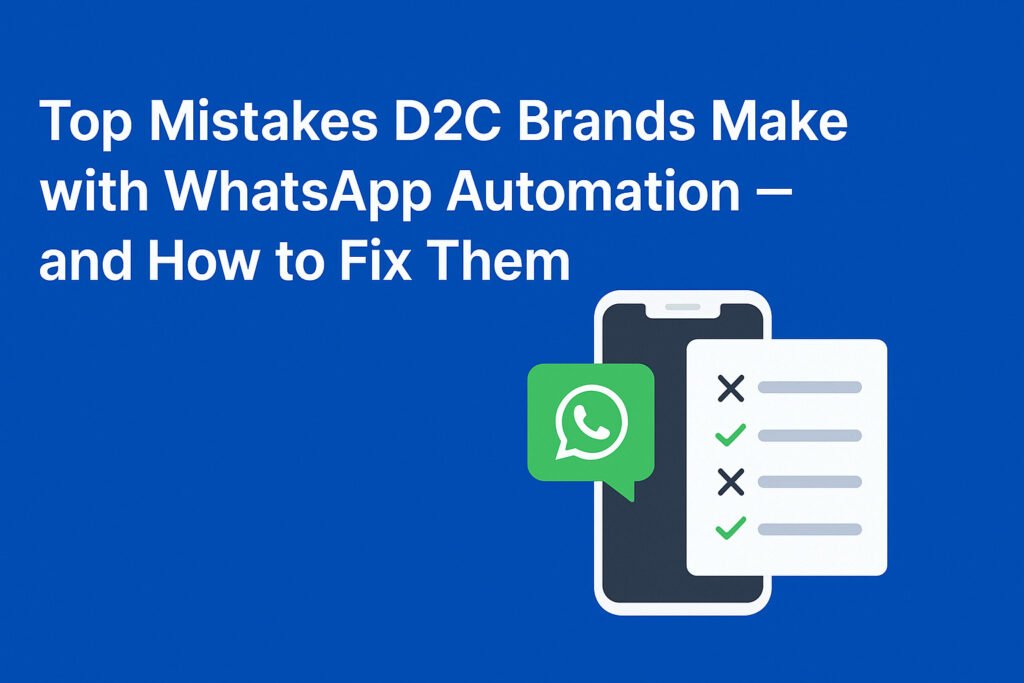
WhatsApp automation has quickly become a game-changer for D2C brands in India and around the world. With consumers increasingly preferring instant messaging over traditional emails or mobile apps, WhatsApp delivers unmatched engagement and conversion potential. But here’s the catch — when not executed correctly, automation can do more harm than good. From account bans to low engagement, D2C brands often fall into avoidable traps. In this blog, we’ll break down the most common WhatsApp automation mistakes and share practical solutions to help you drive better results with confidence and compliance. 1. Sending Bulk Messages Without Opt-in Mistake: Broadcasting messages to users who haven’t explicitly opted in.Impact: Violates WhatsApp’s Business Policy and can lead to account suspension or message delivery blocks. Fix: Always collect user consent before sending marketing messages. Use website pop-ups, checkout opt-ins, or Click-to-WhatsApp ads. Platforms like TheBotMode offer consent-based automation that ensures 100% compliance. 2. No Personalization in Message Flows Mistake: Using generic, one-size-fits-all templates such as “Hi, Buy Now!”.Impact: Poor engagement, low open rates, and increased opt-outs. Fix: Personalize every message with dynamic fields like customer name, product name, or order ID. Segment users based on behavior and lifecycle. For example:“Hi [Name], your order #[OrderID] is ready. Should we ship it today?” 3. Not Using Cart Recovery Automation Mistake: Ignoring cart abandoners in your WhatsApp flow.Impact: Missed opportunity to recover 60–70% of potential sales. Fix: Set up automated cart recovery messages triggered at intervals (e.g., 1 hour, 6 hours, and 24 hours post-abandonment). Include urgency or a small incentive. TheBotMode enables seamless Shopify cart recovery with zero manual setup. 4. Poor Timing of Campaign Messages Mistake: Sending messages at odd hours or when customers are inactive.Impact: Low visibility, muted responses, and user irritation. Fix: Schedule messages based on customer location and behavior patterns. Most D2C shoppers respond best between 10 AM–1 PM or 6 PM–8 PM. TheBotMode’s smart scheduler handles this automatically. 5. Over-Automating Conversations Mistake: Relying entirely on chatbots for every interaction.Impact: Frustrated customers, unresolved issues, and lost trust. Fix: Use a hybrid approach — automation for FAQs, order tracking, and payments, and human agents for complex queries. Always include an easy “Talk to a real person” option in your flow. 6. Not Leveraging Broadcast Segmentation Mistake: Sending the same message to all users — new visitors, loyal buyers, and inactive leads.Impact: Wasted message credits, poor CTR, and increased opt-outs. Fix: Segment your audience and tailor your broadcast: TheBotMode supports advanced segmentation out-of-the-box. 7. Ignoring Green Tick Verification Mistake: Skipping or delaying WhatsApp Business verification.Impact: Reduced brand credibility and lower response rates. Fix: Apply for WhatsApp Green Tick Verification early. Verified accounts display your brand name instead of a phone number — leading to higher trust and engagement. TheBotMode offers full assistance with this process. Conclusion WhatsApp automation, when done right, can be a growth engine for D2C brands. But ignoring the basics can hurt performance, reduce trust, and risk compliance issues. By avoiding these common mistakes and applying the right strategies, you can transform WhatsApp into your highest-converting channel — one message at a time. FAQs Q: What is the biggest mistake in WhatsApp automation for D2C brands? A: The most critical mistake is sending messages without proper user opt-in, which violates WhatsApp’s policy and can lead to account restrictions. Q: How can I improve engagement on WhatsApp? A: Focus on personalization, behavior-based segmentation, and optimal message timing to drive better engagement. Q: Is Green Tick Verification necessary for small brands? A: While not mandatory, it adds significant trust and is highly recommended for businesses of all sizes. Q: Can TheBotMode help with automation setup? A: Absolutely. TheBotMode offers end-to-end WhatsApp automation, including campaign tools, behavioral segmentation, cart recovery, smart scheduling, and Green Tick assistance.
Spin to Win: How Gamified Widgets Drive Higher Conversions
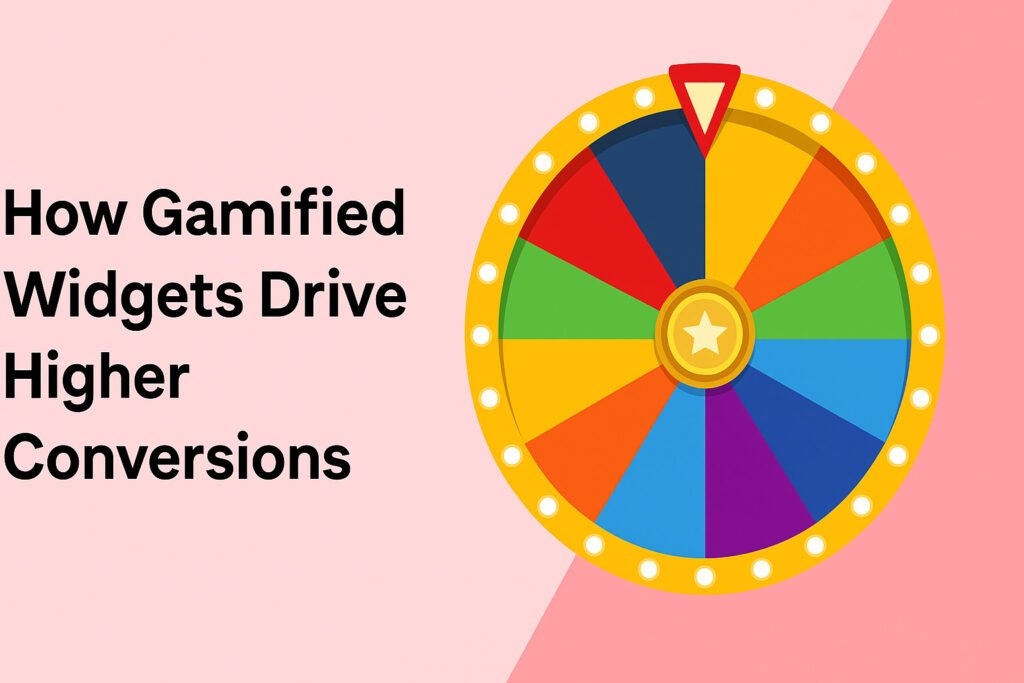
In today’s fast-moving D2C landscape, customer attention is fleeting and conversions are harder to earn. One strategy that consistently works? Gamified experiences like Spin to Win widgets. These interactive popups don’t just entertain—they convert. They reduce bounce rates, collect high-quality leads, and deliver a compelling brand experience that sets you apart. 1. What Is a Spin to Win Widget? A Spin to Win widget is a gamified popup or embedded tool that allows users to spin a digital wheel for a chance to win a reward—such as a discount, free shipping, or a special gift. This game-like approach encourages participation and adds excitement to the browsing experience, turning passive visitors into active users. 2. Why Gamification Works in E-commerce Gamification leverages core psychological drivers such as curiosity, competition, and the desire for instant rewards. When used strategically in eCommerce, it results in: 3. How Spin to Win Widgets Improve Conversions Studies show that adding a gamified popup can lift your website’s conversion rate by 10–30%. Here’s why: 4. Ideal Use Cases for D2C Brands Whether you’re a skincare startup or a fashion brand, Spin to Win popups can be a high-impact tactic for: D2C brands serving different tiers or regions—like Delhi NCR, Bangalore, or Pune—can set up custom wheels tailored by pincode or city using IP-based personalization. 5. How TheBotMode Powers Spin to Win Campaigns TheBotMode enables D2C brands to launch advanced spin-to-win experiences with full backend automation and WhatsApp connectivity. Our key features include: 6. Best Practices for High-Performing Spin Widgets To get the most from your Spin to Win campaign, follow these guidelines: Conclusion: Gamify to Convert If you’re a D2C brand looking to break through the noise, gamified tools like Spin to Win widgets can be your growth lever. When combined with WhatsApp follow-ups and automated lead nurturing, the results multiply. Don’t just attract traffic—convert it. Ready to gamify your store? Let TheBotMode help you spin the wheel towards higher conversions. FAQs Q1. Are Spin to Win widgets mobile-friendly? Yes, modern spin popups are fully responsive and work seamlessly across mobile, tablet, and desktop. Q2. Can I control the prizes and winning logic? Yes. With TheBotMode, you can customize each wheel segment, prize probability, and expiration logic. Q3. Is it compliant with data privacy laws like GDPR? Yes. The widget includes opt-in checkboxes and transparent privacy notices to ensure compliance. Q4. How does it integrate with WhatsApp marketing? TheBotMode allows you to capture leads via the spin and automatically trigger WhatsApp flows for reminders, coupons, and follow-ups.
Top WhatsApp Marketing Automation Tools Every D2C Brand Needs
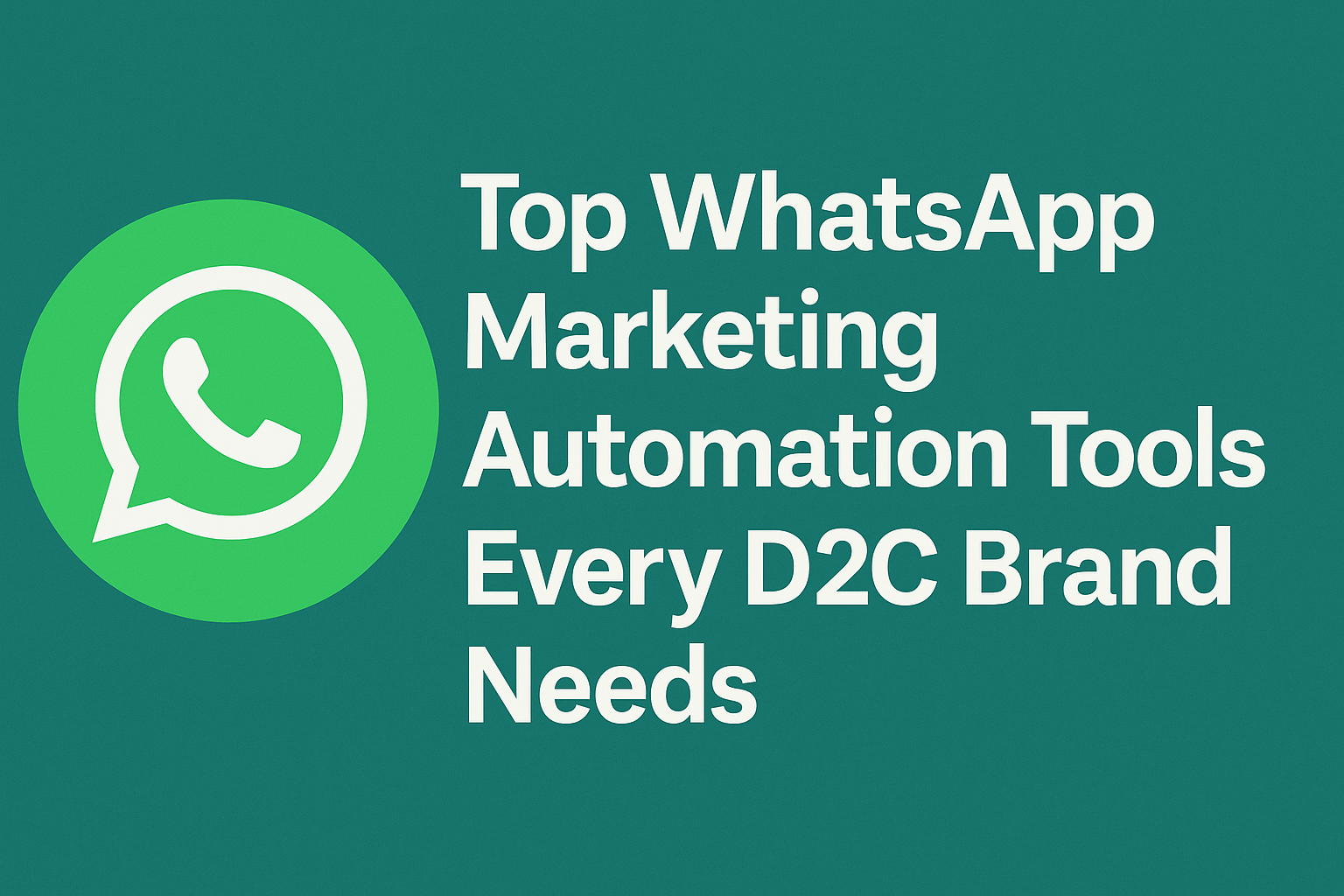
Introduction WhatsApp is now the most powerful direct-to-consumer channel—with 98% open rates and real-time delivery. But it’s not just about sending messages; it’s about building meaningful customer journeys. That’s where The Bot Mode steps in. Designed for D2C brands, The Bot Mode offers end-to-end WhatsApp marketing automation, converting conversations into conversions with ease. In this blog, you’ll explore why The Bot Mode is the must-have automation tool for WhatsApp marketing and how it stacks up against generic platforms. Why WhatsApp Marketing Automation is Vital for D2C Brands Key Features of The Bot Mode for D2C Brands Use Cases: How D2C Brands Win with The Bot Mode Why The Bot Mode Outperforms Traditional WhatsApp Tools Feature The Bot Mode Generic Tools D2C Specialization ✅ Yes ❌ No Built-in eCommerce Flows ✅ Shopify/WooCommerce Ready ❌ Limited integrations Smart Chatbot Builder ✅ NLP & AI powered ⚠️ Basic templates Campaign Automation ✅ Drip, Segmented ⚠️ One-time blasts Compliance Support ✅ GDPR-ready ⚠️ Requires manual setup Best Practices to Maximize The Bot Mode’s Impact Future Trends in WhatsApp Marketing You Can Leverage with The Bot Mode Conclusion For D2C brands, WhatsApp is more than a messaging app—it’s a full-fledged conversion channel. The Bot Mode offers the automation backbone you need to scale customer communication, increase conversions, and reduce support costs. Whether you’re just launching or scaling globally, The Bot Mode adapts to your growth and elevates your marketing game. FAQs Q1: What makes The Bot Mode ideal for D2C?It’s tailored for commerce—from cart recovery to reorder flows, all automated. Q2: Can I personalize my WhatsApp broadcasts?Yes, using tags like {{name}}, {{order_id}}, etc., within The Bot Mode. Q3: Is The Bot Mode API-based or no-code?Both. You can use its visual builder or API for deeper integrations. Q4: How fast can I go live?Most brands are up and running in under 72 hours. Q5: Is it GDPR-compliant?Absolutely. The Bot Mode follows all major data privacy protocols.
WhatsApp Campaign Metrics: How to Track Clicks, Conversions, and ROI
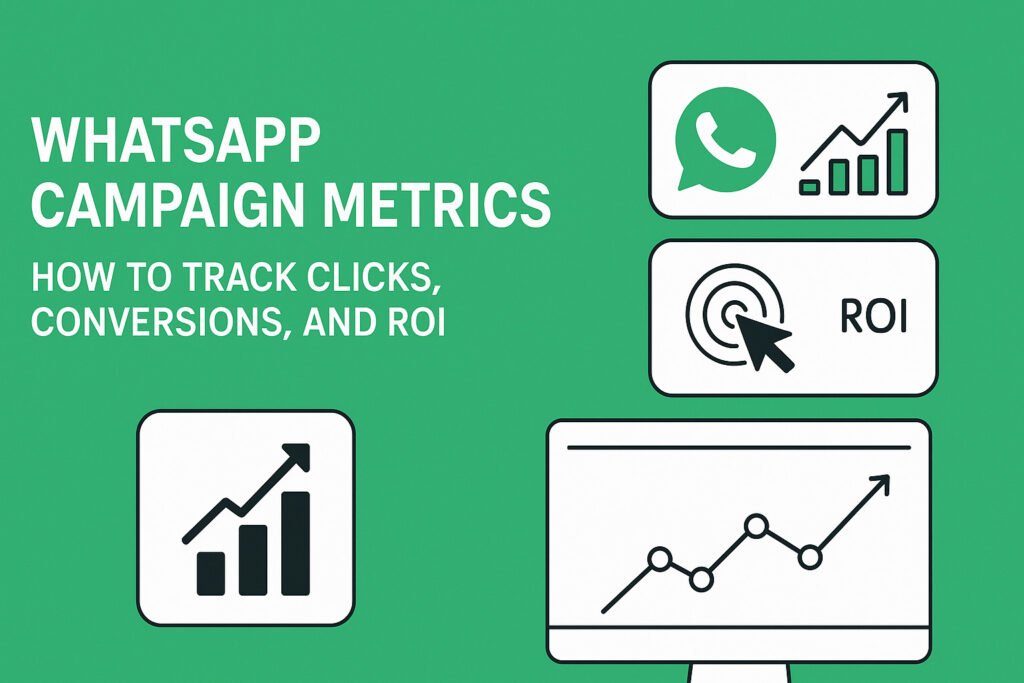
WhatsApp has emerged as a powerful growth channel for D2C brands—offering unmatched reach, high engagement, and direct conversions. But sending messages alone isn’t enough. To drive meaningful results and scale your marketing efforts, you need to understand what’s working and what’s not by tracking the right campaign metrics. In this blog, we’ll break down the essential WhatsApp metrics every brand should track, how to track them effectively, and how TheBotMode can help you unlock smarter, data-driven campaigns. Why WhatsApp Campaign Metrics Matter for D2C Brands Tracking campaign metrics is not just about reporting—it’s about improving performance. With clear insights, you can identify: Without this visibility, you’re just guessing. Key WhatsApp Campaign Metrics You Should Track 1. Delivery Rate Formula:(Delivered Messages ÷ Total Messages Sent) × 100 Why It Matters:A low delivery rate may indicate poor contact data, unverified numbers, or opt-in issues. 2. Open Rate The percentage of delivered messages that were opened by recipients. Why It Matters:WhatsApp typically sees open rates above 95%. If yours is lower, your timing or content may need adjustment. 3. Click-Through Rate (CTR) Formula:(Link Clicks ÷ Delivered Messages) × 100 Why It Matters:CTR reveals how compelling your message is. Use UTM-tagged links to get accurate click data via Google Analytics or TheBotMode dashboards. 4. Conversion Rate Formula:(Conversions ÷ Link Clicks) × 100 Why It Matters:This is your key performance indicator. It tells you if users are taking meaningful actions after clicking, like making a purchase or signing up. 5. Opt-Out Rate Measures how many recipients unsubscribed after receiving your message. Why It Matters:A high opt-out rate signals poor targeting or over-messaging. Monitor this to protect your sender reputation. 6. Response Rate For two-way campaigns, this tracks how many users replied to your message. Why It Matters:This metric helps assess engagement quality and audience trust. 7. WhatsApp Campaign ROI Formula:(Revenue – Campaign Cost) ÷ Campaign Cost × 100 Why It Matters:This is the most business-critical metric. If ROI is low, revisit your messaging, targeting, or offer. How to Track WhatsApp Campaign Metrics Effectively 1. Use UTM Parameters for Links Always add UTM tags to your campaign URLs. This allows you to attribute traffic, engagement, and conversions within Google Analytics. Example:https://yourstore.com/product?utm_source=whatsapp&utm_medium=campaign&utm_campaign=summer_sale 2. Enable WhatsApp Business API Analytics With TheBotMode’s WhatsApp API, you can track: This gives you full control over your messaging performance. 3. Connect WhatsApp with Your Store Using TheBotMode’s Shopify or WooCommerce integration, you can: 4. Use Campaign Dashboards TheBotMode provides dashboards where you can: WhatsApp Campaign Benchmarks for D2C (2025) Metric Industry Benchmark Open Rate 95%+ Click-Through Rate 10%–20% Conversion Rate 5%–10% Opt-Out Rate Below 1% ROI 5x–10x (Varies by niche) Source: TheBotMode internal customer data (2025) Conclusion Great WhatsApp marketing isn’t just about sending messages—it’s about continuously learning from your data. By tracking key performance metrics, D2C brands can fine-tune their messaging, improve conversion rates, and generate better ROI from every campaign. TheBotMode gives you the tools to do exactly that—track, measure, and scale with confidence. FAQs Q1: How can I track clicks on WhatsApp messages?Use UTM-tagged links and track click data in Google Analytics or TheBotMode’s dashboard. Q2: What’s a good WhatsApp conversion rate for D2C brands?A strong conversion rate is between 5% to 10%, depending on your offer and audience. Q3: Can I track revenue from WhatsApp campaigns?Yes, by integrating TheBotMode with Shopify, WooCommerce, or CRMs, you can see direct revenue attribution. Q4: What’s the average ROI from WhatsApp campaigns?Most brands see 5x–10x returns, though results vary based on targeting and content quality. Q5: Does TheBotMode offer in-depth campaign analytics?Yes. TheBotMode offers detailed analytics including delivery status, clicks, replies, conversions, and ROI.













